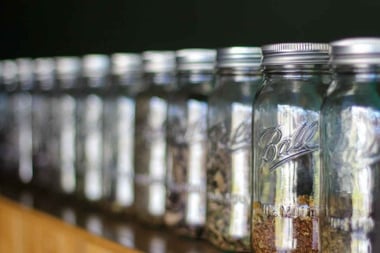
Unless you or someone you know has experience with “dense breasts,” it’s possible you’ve never contemplated the topic. Approximately 43 percent of Canadian women over 40 have what are known as dense breasts. And, roughly one in eight women will develop breast cancer in their lifetime. The connection is worth knowing more about.
What are dense breasts?
Breasts are made up of milk glands, milk ducts, and supportive tissue (called fibroglandular tissue)—all of which, together, make up the dense tissue in the breast. The nondense element of the breast is fatty tissue. Dense breasts, which are identified on a mammogram, have less fatty tissue, more fibroglandular tissue.
Who is more likely to have dense breasts?
Multiple factors affect breast density, including breastfeeding, menopause, and cancer-fighting medications. Generally, though, breast tissue tends to become less dense with age, and women with less body fat (compared with women who are obese) are more likely to have dense breasts. Women who take hormonal therapy to relieve menopause symptoms are also more likely to have dense breasts.
Why do dense breasts matter?
Karen White survived cancer, had multiple surgeries, and learned helpful information about dense breasts and mammogram results along her wellness journey. She says, “There are steps you can take to minimize your [breast] risk, [including] and understanding your breast density.”
Cancer risk
Jennie Dale, co-founder and executive director of Dense Breasts Canada, which advocates for increased awareness for all Canadian women, says that “dense breasts increase your risk for breast cancer.” In fact, breast density is one of the top risk factors for breast cancer.
Other breast cancer risk factors include older age; family history; reproductive history (early menstruation start, late menopause, first pregnancy after age 35); obesity; and alcohol consumption.
Screening problems
Dense breasts can cause difficulty for breast cancer screening, agrees Dale. When a woman with dense breasts has a mammogram—an x-ray of breast tissue—the results are more difficult to interpret. This is because dense breast tissue and some abnormal breast changes, such as calcifications and tumours, both appear as white areas in the mammogram, whereas fatty tissue appears as dark areas.
What about breast self-exams?
Although self-exams can’t detect dense breasts, being familiar with your breast tissue can be very helpful to detect changes, especially unusual lumps. Any noticeable changes or nipple discharge are signs you should visit your doctor for an assessment.
A lump that we can feel on exam is not necessarily a cancer, but it is important to pay attention and talk with your healthcare professional as soon as you notice a new lump or mass in your breast.
How do you know if you have dense breasts?
Women can’t detect the density of their breast tissue through a breast self-exam nor can their healthcare practitioner with a clinical exam, since dense breasts aren’t determined by size or feel. Only a radiologist can determine breast density by examining mammogram results.
Mammograms are available across Canada to women over age forty—even if there is no family history of breast cancer. The best-case scenario is knowing what category of density your breasts are, so that you can make informed decisions with your healthcare provider about what type of breast screening you’re a candidate for and how often.
Screening programs send patients results following their mammograms, which include their BI-RADS assessment (Breast Imaging Reporting and Data System). BI-RADS is used to classify breast density into the following four categories from A to D:
- BI-RADS A: The breast consists almost entirely of nondense fatty tissue.
- BI-RADS B: The breast is mainly nondense fatty tissue with a few scattered areas of dense tissues.
- BI-RADS C: The breast is an almost equal mix of nondense fatty and dense tissue.
- BI-RADS D: The breast is almost entirely dense tissue.
White wants women to understand what their breast density rating means post-mammogram, and for women to follow up with their healthcare practitioner, in particular, if their breast density is a C or D rating and are feeling generally unwell.
Dense breasts can make screening and detecting cancer more difficult, so a discussion with your healthcare practitioner is important to determine if you need to, based on your BI-RADS classification and your overall breast cancer risk, seek follow-up screening. This might include the following:
- Breast ultrasound may detect cancer that was not visible on mammogram.
- 3D mammogram uses X-rays to take pictures of the breast from different angles. The photos are then formed into a 3-D composite.
- Breast MRI uses a magnetic field and radio waves to make 3D images of the breast tissue. It's often recommended for those with a very high risk of breast cancer.
- Molecular breast imaging uses a radioactive tracer, that contains material to help locate areas of possible cancer, and camera to make pictures of the breast tissue.
Be your best advocate
For your journey toward optimal breast health and healthy living, being aware and educated can be a simple step, so do your homework. “Be vigilant with your health monitoring while you’re still healthy. We tend to take our health for granted until something happens; be informed about your risks,” says White.
Supplements for healthy breast tissue and immune support
|
curcumin |
has shown promising antitumour effects in preclinical breast cancer studies |
|
green tea |
antioxidants support cardiovascular, metabolic, cognitive, and cellular health; chemopreventive properties are attributed to their polyphenols, particularly EGCG |
|
medicinal mushroom |
intake may help protect against cancer, in particular, gastrointestinal and breast cancer |
|
omega-3s |
moderate inflammation, lubricate tissues, repair cell membranes, support nerve and cardiovascular health, reduce cancer risk |
|
vitamin C |
can limit formation of carcinogens; modulate immune response; reduce oxidative damage |
|
vitamin E |
antioxidant that protects against oxidative damage that can lead to cancer or cardiovascular disease |
This article was originally published in the May 2025 issue of alive magazine.




